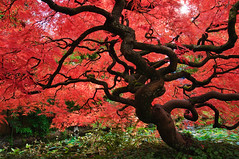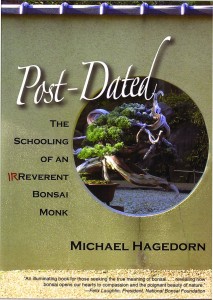By Jessica Tanady
The art of Bonsai calls for a plant to get kept in the little container, and yet maintain the qualities that are viewed in nature. This indicates that the plants are smaller versions of what is discovered in a forest, plus a really effective Bonsai plant is one that has the distinctive characteristics of its larger form.
The Trident Maple Bonsai is one with the trees that make for a excellent Bonsai plant. This plant works extremely well, and has the ability to develop from the container and still seem incredible.
The art of Bonsai is practiced all over the world and also the techniques are shared by many who excel in this hobby. There’s a great deal of work connected with Bonsai, but the rewards definitely come to light when a plant thrives and is lovely.
When starting the process with growing a Trident Maple Bonsai a gardener first begins by picking a plant or they can develop a seed. It may well be simpler for beginners to choose a plant for an initial project as developing a seed may perhaps be unpredictable.
Selecting a Trident Maple Bonsai is often a step which could make certain a productive plant, as once again these are trees that function nicely with this procedure. Because a productive Bonsai tree requires to be extremely upright, the Trident Maple Bonsai is often a good option as it naturally grows in this direction. The Trident Maple Bonsai also has incredibly defined roots and bark giving it the seem which is desired in Bonsai.
The Trident Maple should be transplanted in early spring, appropriate just before they start to bud. This can be the perfect time to trim their roots as well, as this is when they’ve their biggest growth spurt. This is also the time to start pruning and shaping the tree, prior to it begins developing.
It wants for being planted with a great Bonsai potting soil and drainage demands for being produced for the plant using a combination of bark, fragmented granite along with other items that can be used to create a excellent drainage method.
The Trident Maple Bonsai requires plenty of sun light and water. It is a plant which is reputed to be drought tolerant, but they nevertheless will need a daily supply of water during the summer, and might be cut back from the winter months.
Bonsai strategies could be employed to develop the appealing look by pruning and nipping leaves. The Trident Maple Bonsai will have lots of foliage and is great for the method of Bonsai. A Trident Maple Bonsai is an great choice for your Bonsai enthusiasts or those just starting in the hobby.
Jessica Tanady loves to write articles since 4 years ago, both offline and online. Not only does this author love to write in the topic of beauty, fitness and weight loss. Visit her latest articles on tiffany lights which reviews and discuss about kitchen light fixtures.
Article Source: http://EzineArticles.com/?expert=Jessica_Tanady
http://EzineArticles.com/?Some-Fundamentals-About-Trident-Maple-Bonsai&id=4846058
Read more!
Friday, September 30, 2011
Bonsai tree: Aichi-en bonsai nursery
Source: Bonsai Tonight
Aichi-en bonsai nursery
Bonsai professionals in Japan commonly follow one of two paths – they can become bonsai sellers or bonsai creators. The proprietor of Aichi-en Bonsai Nursery in Nagoya belongs to the latter group. Junichiro Tanaka is a fourth generation bonsai professional. His great-grandfather Sukijiro started the nursery at 17 years old by making the bold move of planting 1,000 ume. It’s a fun story – you can read about it on the Aichi-en website.
Although Aichi-en is best known for black pine, Tanaka is equally skilled with deciduous varieties. Here are some photos from Boon Manakitivipart’s visit to the garden earlier this year.
Momiji
Kaede
The sheer number of trees at Aichi-en is impressive. I have yet to visit the nursery, but I’m planning to visit soon.
A sea of pines
More pines
Yet more pines
And another conifer bench
Deciduous bonsai
How does Tanaka take care of so many trees? With help from the likes of Peter Tea, his newest apprentice. Peter has been writing a fantastic blog about the experience – I highly recommend following along at peterteabonsai.wordpress.com.
Goyomatsu with amazing movement
Goyomatsu
An interesting Kuromatsu
Kuromatsu with not one but two right angles in the trunk – you don’t see that every day
Kaede
Matsu (Bob King photo)
Goyomatsu (Bob King photo)
Boon and Peter contemplate awesome kaede ramification – really awesome ramification (Bob King photo)
Momiji (Bob King photo)
It’s been fun working with other people’s photographs. Photos offer a glimpse of other people’s perspective. Among the photos of the outstanding trees at Aichi-en, I found several close-up shots of pine deadwood.
Pine deadwood
I’ve heard Boon talk a lot about the importance of the character of deadwood. It’s one thing to reveal shari by removing some bark or perform heavy carving to add interest to a piece of deadwood, and it’s another to display deadwood with age. The above photo is a great example of aged deadwood.
Read more!
Thursday, September 29, 2011
Bonsai tree: Bonsai Today Back Issues 65% off
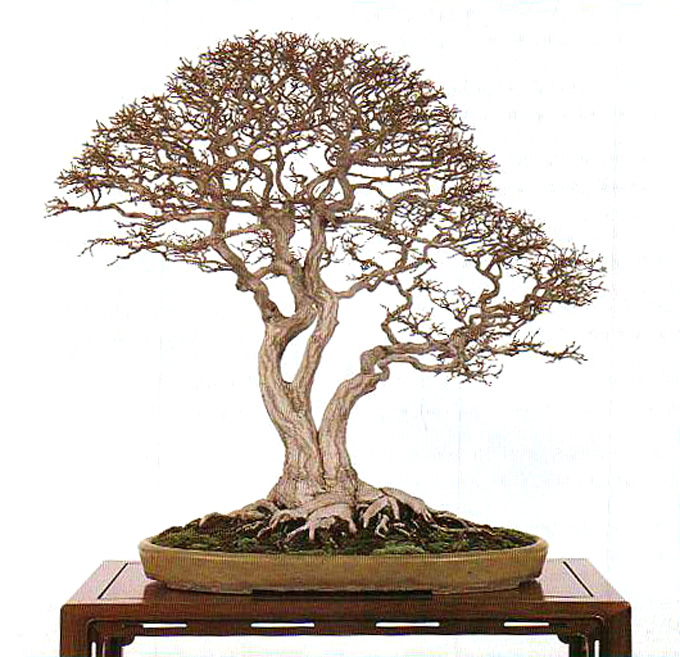 This Hornbeam appears in a bonsai gallery in Bonsai Today issue 94.
This Hornbeam appears in a bonsai gallery in Bonsai Today issue 94.Get yours before they are gone
For years Bonsai Today was the premier English language bonsai magazine. Fortunately we still have a selection of back issues that feature how-to articles and world class bonsai from most of the world’s greatest bonsai masters (East and West). However, we are determined to sell them all to make space for our expanding bonsai tool and wire selection. So don’t wait! Many issues are already gone and many others will be gone soon.
And yes, you read it correctly, that’s 65% off
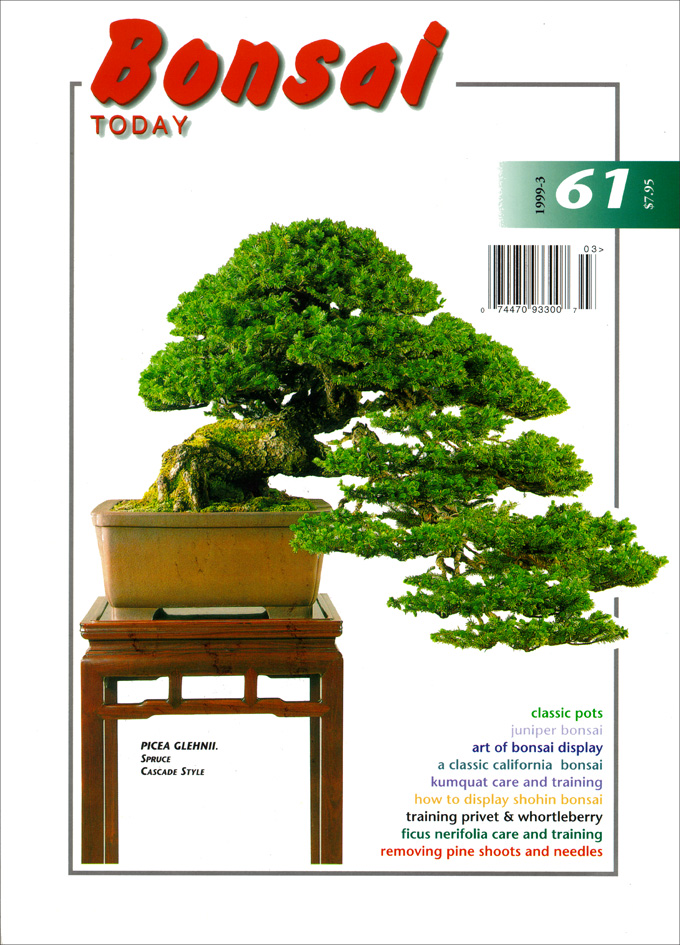
Source: Bonsai Bark Read more!
Bonsai tree: Deadline for Our Bonsai from Scratch Contest Is RapidlyApproaching
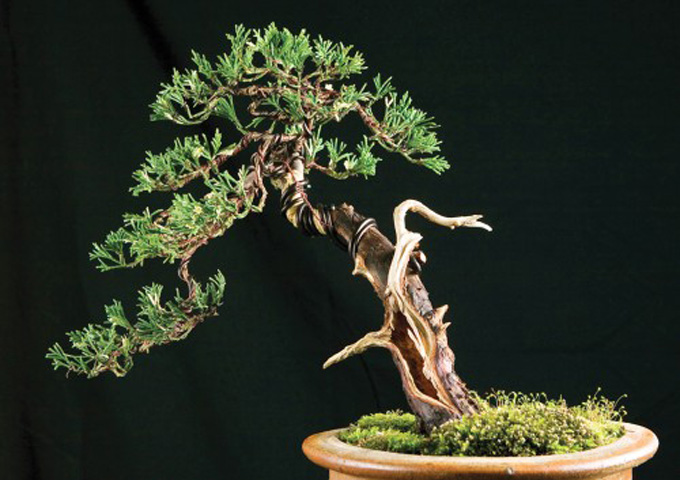 Simon Carr styled this little gem from scratch for an artofbonsai.org contest way back in 2005. It later appeared in Bonsai Today issue 103 in an article entitled ‘Instant Bonsai.’ Which reminds me: all back issues of Bonsai Today are now 65% off.
Simon Carr styled this little gem from scratch for an artofbonsai.org contest way back in 2005. It later appeared in Bonsai Today issue 103 in an article entitled ‘Instant Bonsai.’ Which reminds me: all back issues of Bonsai Today are now 65% off.It’s October 15th
A friendly reminder to of you who have sent in your before photos of untrained stock, your ‘after’ photos must be received by Oct 15th for our Bonsai from Scratch Contest. That’s just over 2 weeks from now. Don’t procrastinate! There are lots of valuable prizes and you just might win something.
You can still enter
We will accept ‘before’ photos right up until the deadline. This means of you wait until October 15th to send your before photos, you’ll have to send your ‘after’ photos at the same time.
Donate a prize and your fame will spread like wild fire
If you donate a prize for our Bonsai from Scratch Contest, your name (and your business name) will be listed with links in the following places (at least two times each): Bonsai Bark and our Stone Lantern Newsletter. Please contact me if you are interested: wayne@stonelantern.com.
Source: Bonsai Bark Read more!
Bonsai tree: Trident Maple Bonsai The Basics
By Jessica Tanady
The art of Bonsai calls for a plant to get kept in the little container, and yet maintain the qualities that are viewed in nature. This indicates that the plants are smaller versions of what is discovered in a forest, plus a really effective Bonsai plant is one that has the distinctive characteristics of its larger form.
The Trident Maple Bonsai is one with the trees that make for a excellent Bonsai plant. This plant works extremely well, and has the ability to develop from the container and still seem incredible.
The art of Bonsai is practiced all over the world and also the techniques are shared by many who excel in this hobby. There’s a great deal of work connected with Bonsai, but the rewards definitely come to light when a plant thrives and is lovely.
When starting the process with growing a Trident Maple Bonsai a gardener first begins by picking a plant or they can develop a seed. It may well be simpler for beginners to choose a plant for an initial project as developing a seed may perhaps be unpredictable.
Selecting a Trident Maple Bonsai is often a step which could make certain a productive plant, as once again these are trees that function nicely with this procedure. Because a productive Bonsai tree requires to be extremely upright, the Trident Maple Bonsai is often a good option as it naturally grows in this direction. The Trident Maple Bonsai also has incredibly defined roots and bark giving it the seem which is desired in Bonsai.
The Trident Maple should be transplanted in early spring, appropriate just before they start to bud. This can be the perfect time to trim their roots as well, as this is when they’ve their biggest growth spurt. This is also the time to start pruning and shaping the tree, prior to it begins developing.
It wants for being planted with a great Bonsai potting soil and drainage demands for being produced for the plant using a combination of bark, fragmented granite along with other items that can be used to create a excellent drainage method.
The Trident Maple Bonsai requires plenty of sun light and water. It is a plant which is reputed to be drought tolerant, but they nevertheless will need a daily supply of water during the summer, and might be cut back from the winter months.
Bonsai strategies could be employed to develop the appealing look by pruning and nipping leaves. The Trident Maple Bonsai will have lots of foliage and is great for the method of Bonsai. A Trident Maple Bonsai is an great choice for your Bonsai enthusiasts or those just starting in the hobby.
Jessica Tanady loves to write articles since 4 years ago, both offline and online. Not only does this author love to write in the topic of beauty, fitness and weight loss. Visit her latest articles on tiffany lights which reviews and discuss about kitchen light fixtures.
Article Source: http://EzineArticles.com/?expert=Jessica_Tanady
http://EzineArticles.com/?Some-Fundamentals-About-Trident-Maple-Bonsai&id=4846058
Read more!
Wednesday, September 28, 2011
Bonsai tree: Growing Your Own Maple Bonsai
Bonsai trees need tender, loving care and may need extra effort from you to grow and thrive. But, they will reward you with their natural beauty.
The Maples are very vibrant and beautiful trees. They are very leafy and have a full appearance. In the fall, as the leaves are turning, they will turn to yellow and red, this makes a fantastic display.
This is why they are beautiful as Bonsai trees and they tend to thrive well if kept right. The ideal conditions they need combine partial sun and shade for healthy growth.
In the winter, pay particular attention to the roots as they may die if they get too cold. The do not need as much water in the winter, either.
Maples prefer moist soil, so make sure that they have an adequate amount of water daily. Also, make sure there is adequate drainage so that you do not over water it.
These trees do well as informal uprights because of their leafy nature. They may be trained as a cascade but be very careful as you can split the trunk if you do not handle the them delicately. Remember these trees are a long term project and so take your time if training or shaping them.
Some people prefer to wire the tree into a curve. However, this looks and is unnatural for the maple tree. It is recommended that you prune it and work towards a gentle curve. If you are determined to cascade it however, be careful because the tree could scar from any trauma.
Feed the tree approximately once a month. A fertilizer is needed to assist with the growing process, however, do not over do it.
These trees are hearty and must be pruned back fairly regularly. You can also trim the roots if you believe it is getting too large.
It is best to prune the branches in late Fall and Winter when most of the leaves have dropped off. You may want to use a paste to cover the wound once a branch has been cut off.
It may be difficult to determine at times, how much growth is necessary and what needs to be scaled back. The object is to have a miniature rendition of a real tree. Ideally, it should not look like an ordinary houseplant if this is the case it has over grown.
The tree needs to be re potted on a regular basis, typically, every one to two years. When repotting use a mixture of soil, sand and peat.
They can be a very challenging, yet rewarding to grow. Try to obtain as much information in advance so you know what to expect and will be on the alert if there are any problems. Most of all, have fun and enjoy the tree for years to come.
Read more!
Bonsai tree: Revisiting Redwood Bonsai
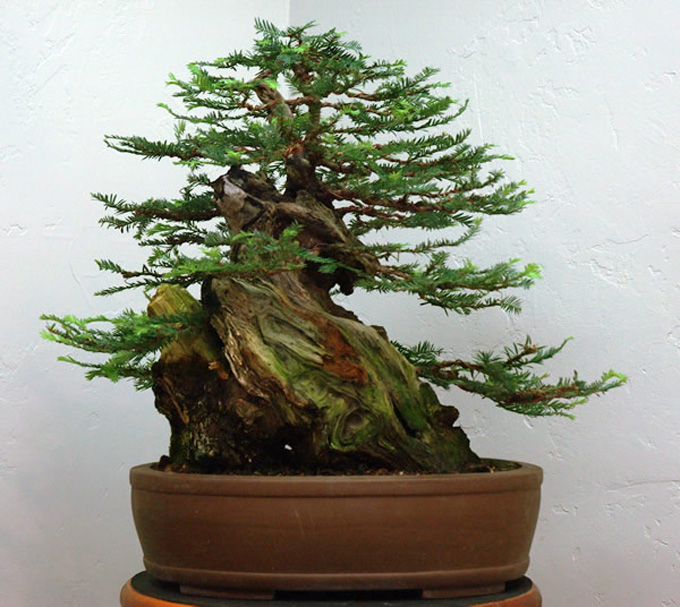 Off to a very good start. Though the branching is young and has a ways to go, the trunk, with its power and character, bodes well for the future of this tree. You can find it along with other quality bonsai at Bonsai Smiths.
Off to a very good start. Though the branching is young and has a ways to go, the trunk, with its power and character, bodes well for the future of this tree. You can find it along with other quality bonsai at Bonsai Smiths.Redwood Empire
A few posts ago, we showed four excellent Coastal Redwood bonsai from the 2011 Redwood Empire Bonsai Show (courtesy of Jonas at Bonsai Tonight). They were unattributed, so we didn’t know who they belonged to. Now, thanks to Cory Jones, we know that the first two in the post belong to Bob Shimon (Mendocino Coast Bonsai). We still don’t know who the other two belong to.
Where do they come from?
In the comments, a question came up about the origin of Coastal redwood and Giant sequoia (also commonly called redwoods) bonsai and the difficulty of finding stunted Giant sequoias that are suitable for bonsai. Bob Shimon, who knows a bit about redwood bonsai (see above paragraph) replied with what I thought was an instructive answer, though I would like to hear more about the actual origin of Coastal redwood stock.
In Bob’s own words
Bob Shimon’s comment: “It has nothing to do about finding “stunted” trees. The Coastal Redwoods are trees that have been cut back and root pruned drastically but are vigorous enough to sprout new growth and roots,which can be developed into bonsai. The Giant Redwoods on the other hand, do not tolerate root and foliage pruning very well. The branches tend to die back after pinching. I’ve only seen a couple of Giant Redwoods as bonsai.” The original post with all the comments is here.
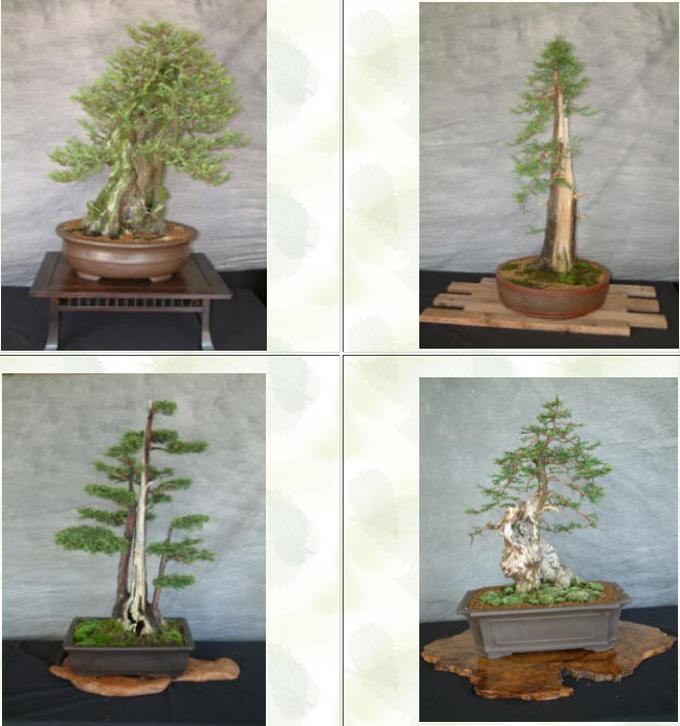 Four redwood bonsai from Mendocino Coast Bonsai’s gallery, with the caption: Examples of redwood trees displayed at our bonsai club’s last show.
Four redwood bonsai from Mendocino Coast Bonsai’s gallery, with the caption: Examples of redwood trees displayed at our bonsai club’s last show.
Source: Bonsai Bark
Read more!
Tuesday, September 27, 2011
Bonsai tree: Visit to Daiju-en
Source: Bonsai Tonight
Visit to Daiju-en
Boon Manakitivipart’s trip to Japan this past winter included a visit to Daiju-en – one of the more amazing pine gardens in Japan. The garden is managed, today, by Toshinori Suzuki. Here are some of the stand-out trees.
Daiju-en (Bob King photo)
Kuromatsu
Goyomatsu
Shimpaku
Kuromatsu – “Fudo” (Bob King photo)
Goyomatsu (Bob King photo)
Kuromatsu (Bob King photo)
Goyomatsu (Bob King photo)
Kuromatsu (Bob King photo)
Tosho (Bob King photo)
Read more!
Monday, September 26, 2011
Bonsai tree: $50 Bonsai Detective Art Contest
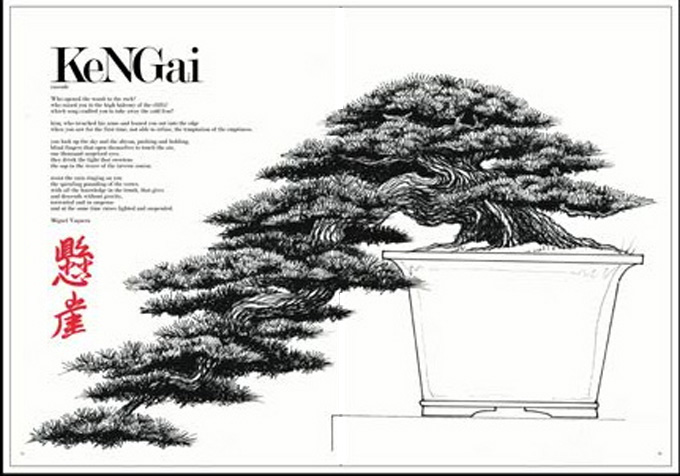 Illustration number 1
Illustration number 1Win a $50 gift certificate to Stone Lantern
The first person to correctly identify the artist of each of the 10 bonsai illustrations in this post will win a 50$ gift certificate to Stone Lantern (see 3. below for exception).
Details
1. You must send your answers to me: wayne@stonelantern.com. Answers posted to comments (below) will be deleted and disregarded.
2. Contest ends October 10, 2011.
3. If no one has correctly identified all the artists by October 10th, then the person with the most correctly identified artists will win.
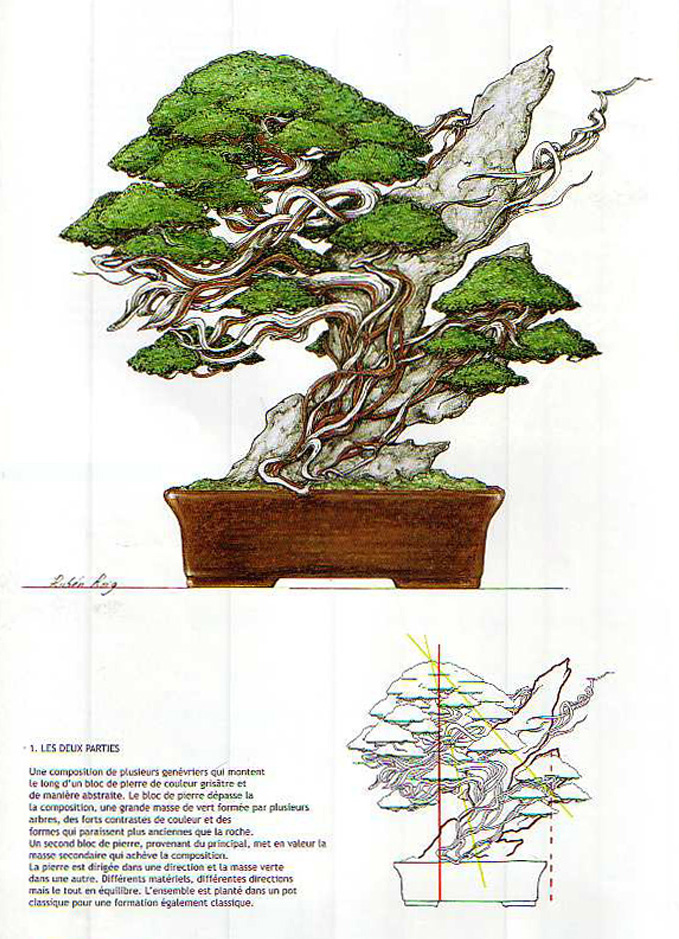 2
2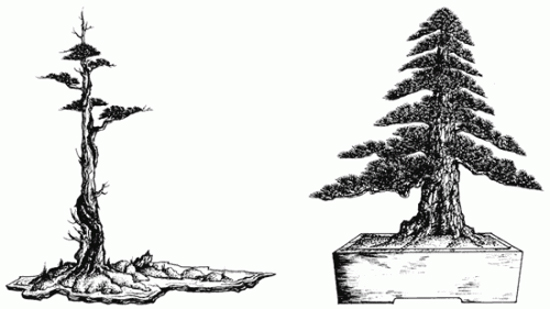
3
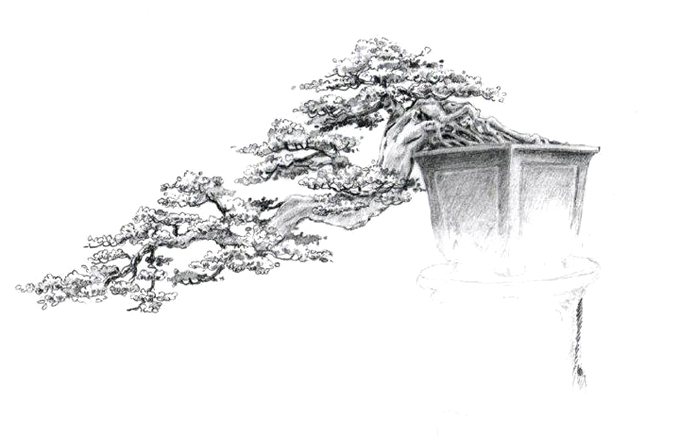 4
4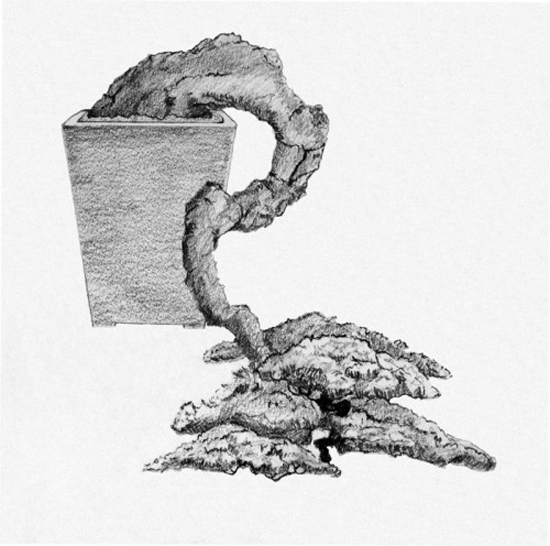 5
5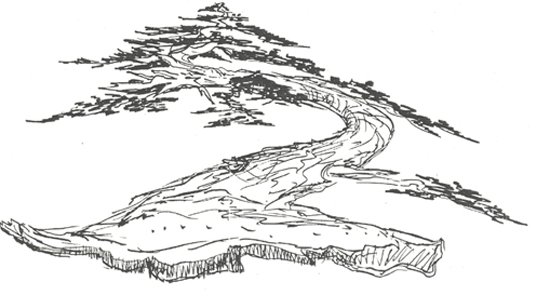
6
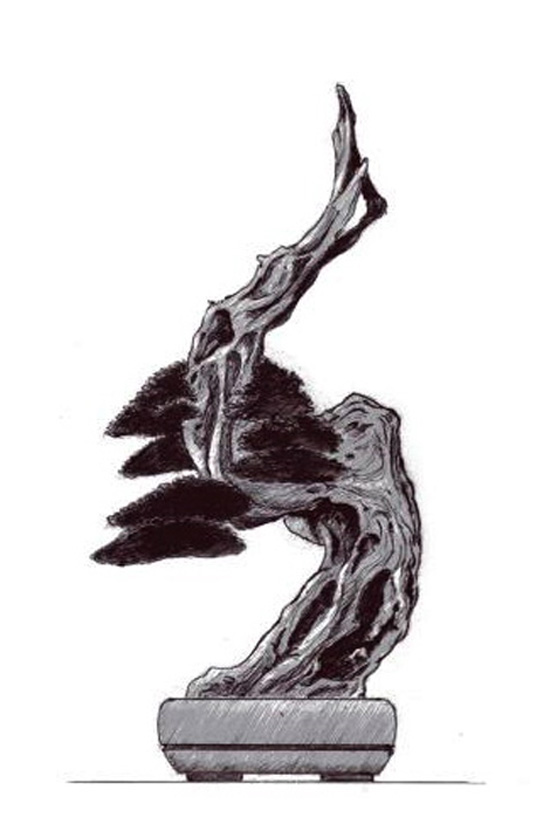 7
7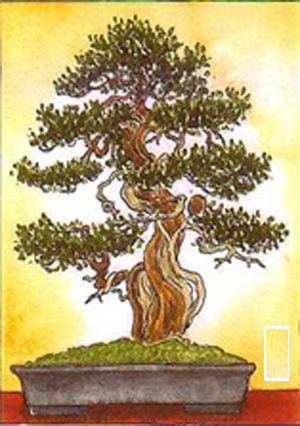 8
8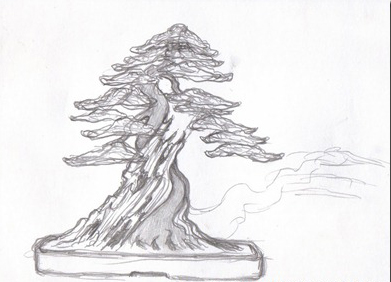 9
9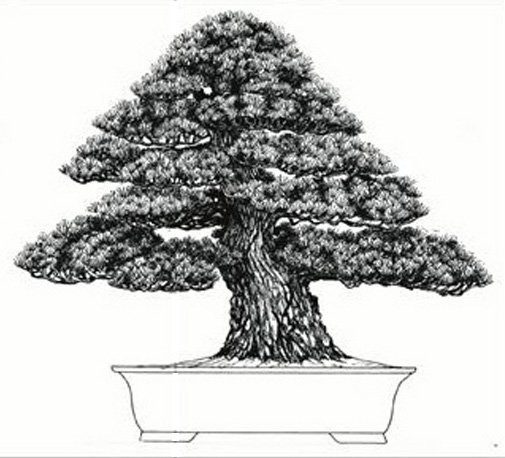 10
10Source: Bonsai Bark Read more!
Saturday, September 24, 2011
Bonsai tree: Slow Down & Stop Thinking So Much
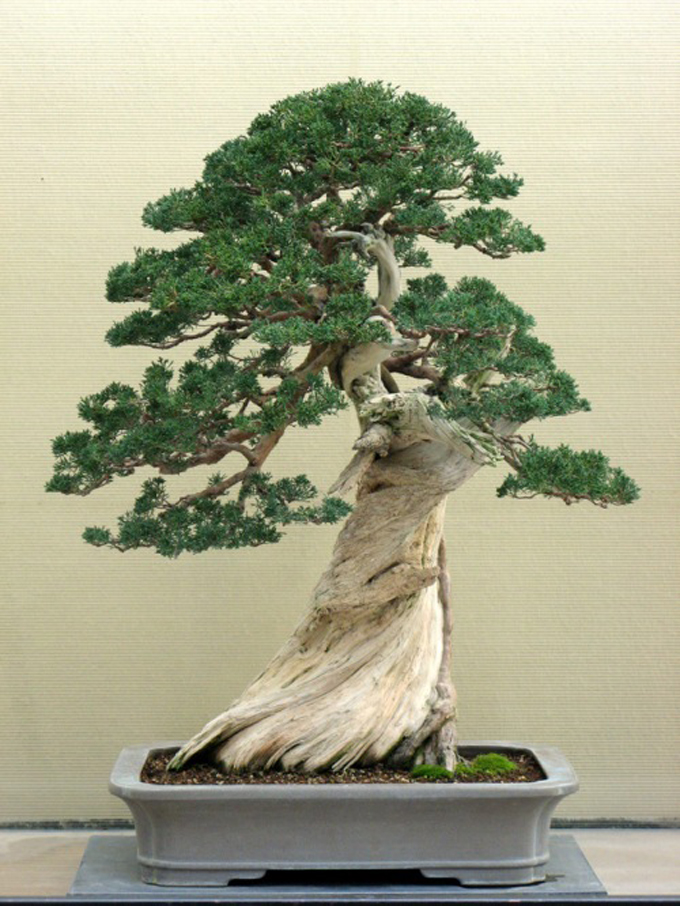 Michael Hagedorn reworked this collected Sierra juniper (grafted with shimpaku) in a half-day refinement session at the Weyerhaeuser collection in Federal Way, Washington, way back in 2009. The before photo is below.
Michael Hagedorn reworked this collected Sierra juniper (grafted with shimpaku) in a half-day refinement session at the Weyerhaeuser collection in Federal Way, Washington, way back in 2009. The before photo is below.Sight of the Blind Man
It’s very rare to find writing that explores what goes on with our thoughts and feelings when we work on our bonsai. Mostly we just talk about our trees and what we want to do to them or what we already did to them. That’s why I was surprised and delighted when I read Michael Hagedorn’s latest post on Crataegus Bonsai, Sight of the Blind Man. (it’s actually the second installment in a series; the first installment is The Hook to Hang Your Hat On). Rather than say much more, I’ll provide a little teaser with a link and you can take it from there.
In Michael’s own words…
When I was in graduate school learning ceramics, a friend of mine asked our sculpture teacher when he was demonstrating assembling a work with clay slabs, sticks, and coils, ‘When you’re making those decisions, what are you thinking?’ The teacher paused and replied simply, ‘I’m not thinking at all.’ And he looked at us and carefully warned us of creating and analyzing at the same time, ‘You’ll fail at that. It’s the worst trap of all, thinking while making.’ You can read the whole article on Crataegus Bonsai.
The Schooling of an Irreverent Bonsai Monk
Most people don’t practice the art writing much (if at all) and therefore don’t write very well, if and when they have to. Michael Hagedorn is the exception. He writes regularly and he writes very well. Some of Michael’s best writing can be found in his delightful and humorous book, Post-Dated – The Schooling of an Irreverent Bonsai Monk.
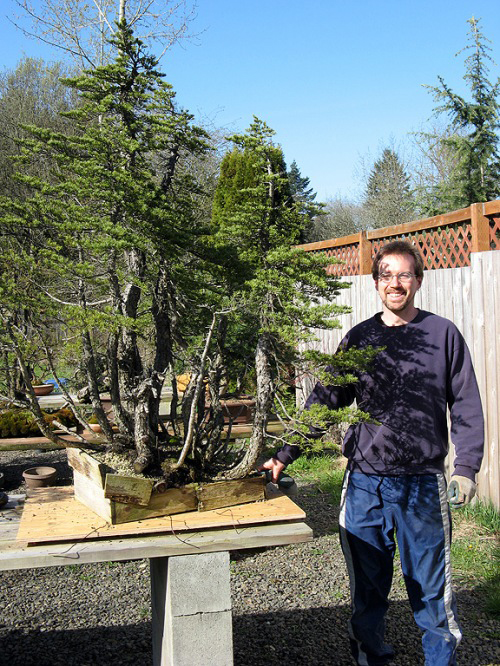 Michael merging with an old Hemlock group. I wonder what he’s thinking. Before photo from 2010.
Michael merging with an old Hemlock group. I wonder what he’s thinking. Before photo from 2010.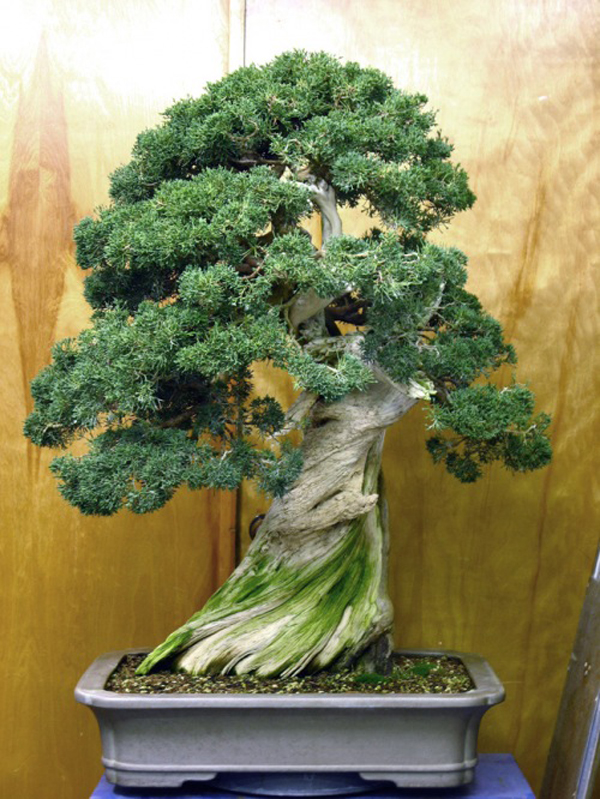 Before photo of the old Sierra/Shimpaku juniper at the top of this post.
Before photo of the old Sierra/Shimpaku juniper at the top of this post. Source: Bonsai Bark Read more!
Subscribe to:
Comments (Atom)


















